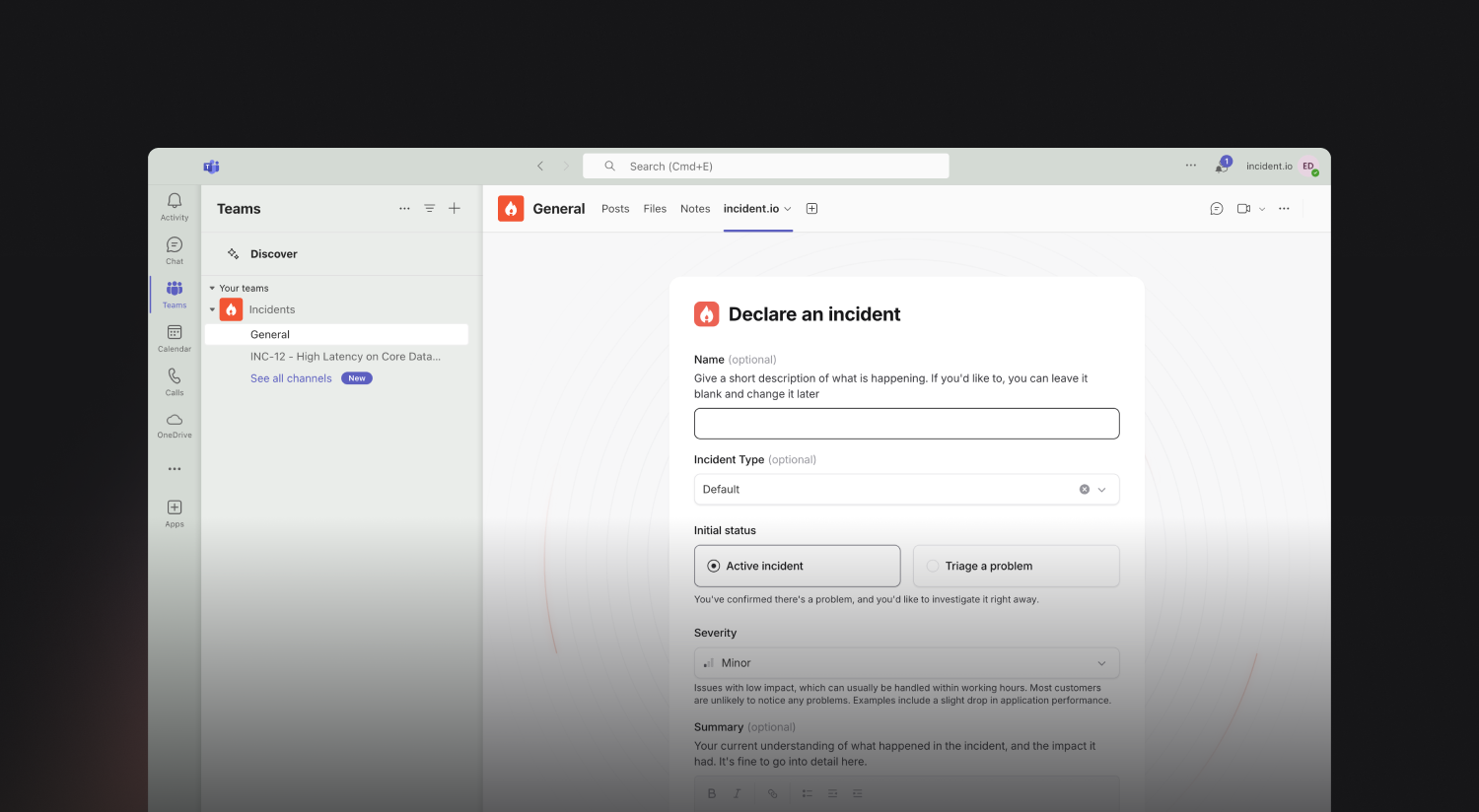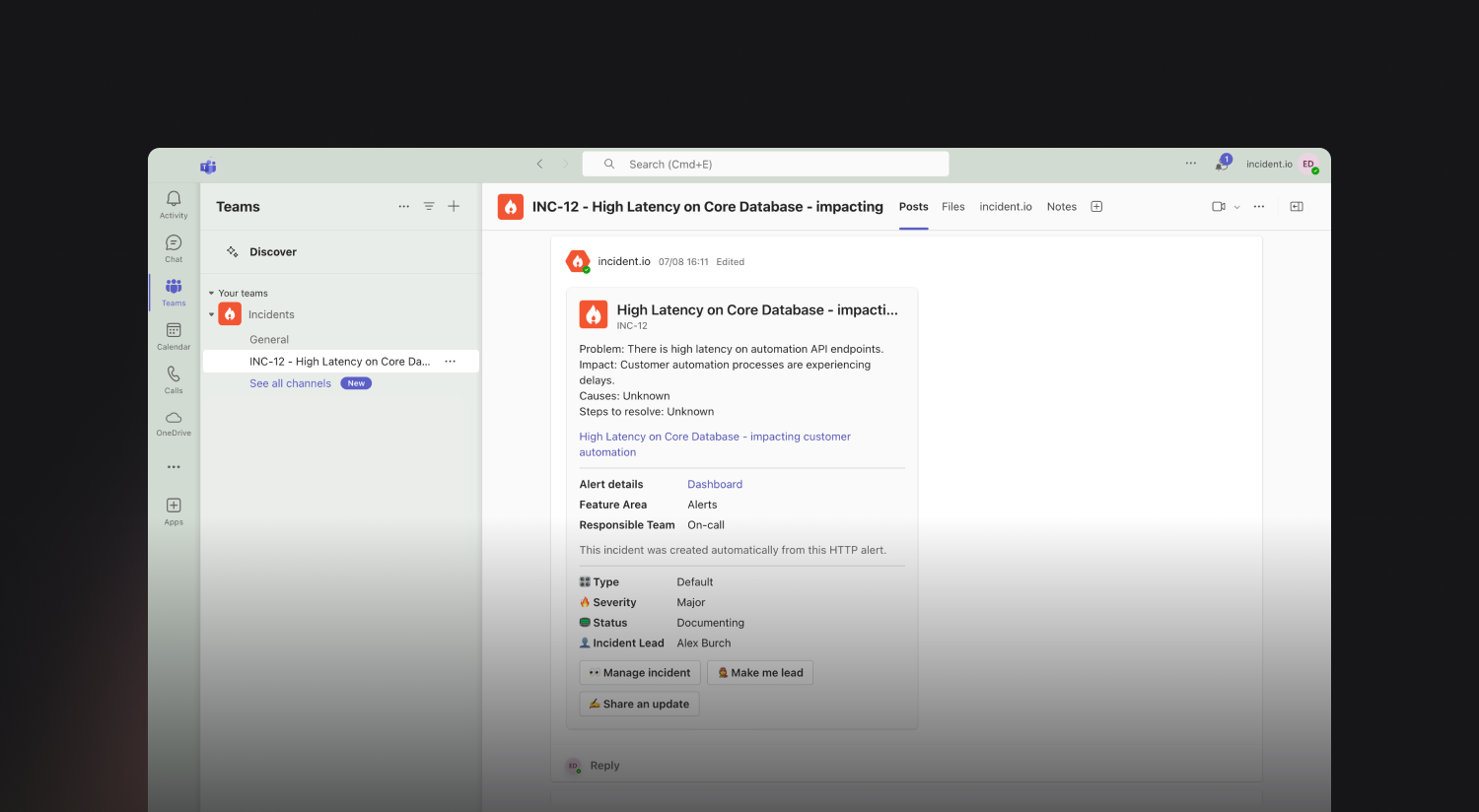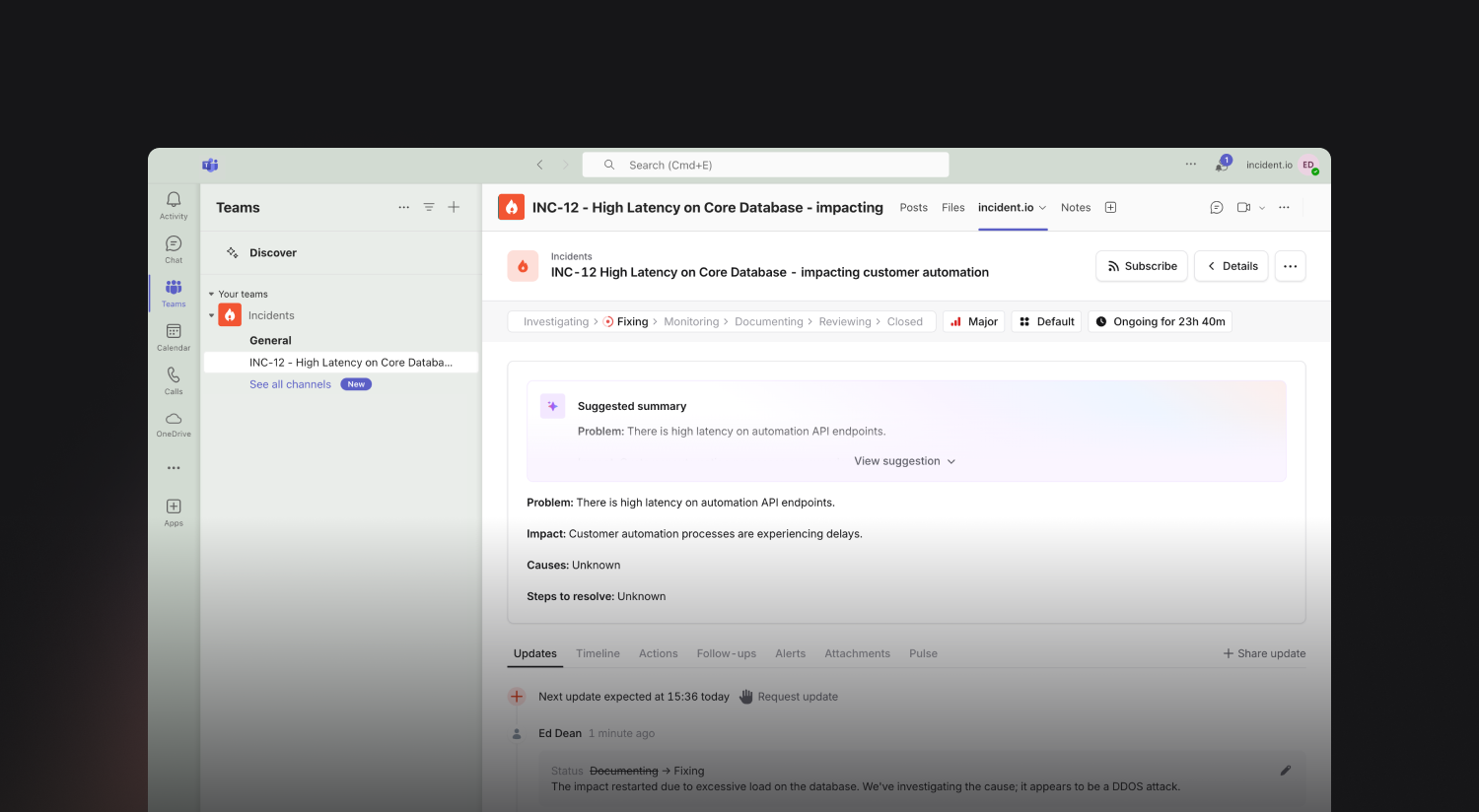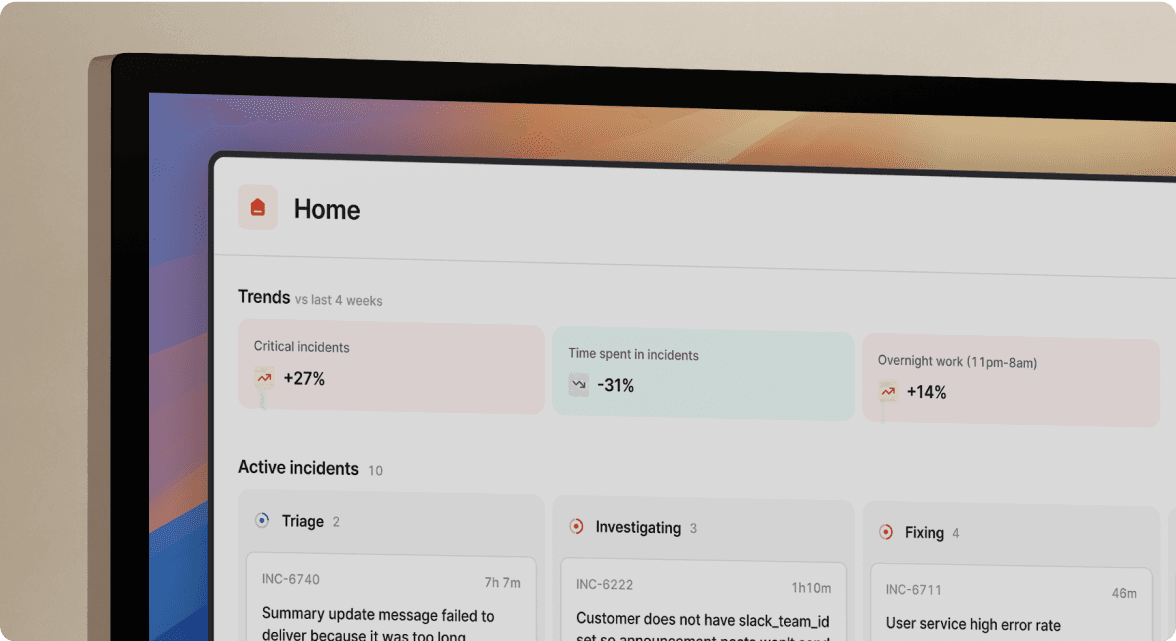Microsoft Teams
August 26, 2024

We started with Response to help with coordination and communication, and then we launched Status Pages to keep everyone up to date. Recently, we launched On-call, which we built from the ground up with empathy for responders, from cleanly enriched alerts to a delightful mobile experience.
All these products have been used by iconic companies like Etsy, Hashicorp and Netflix, but until recently, have only been available if you used Slack.
That all changed when we announced a major milestone: incident.io is now available on Microsoft Teams. This changelog shows you what to expect from incident.io in Teams.
Get going at speed
With incident.io in Microsoft Teams, you can declare incidents in seconds with a fully customizable incident declare form. Here, you can add impacted services or teams with custom fields that power automation throughout the incident. Once the incident is resolved, these fields enable analytics that help you consistently learn from incidents and become more resilient.

You can also connect your alerting systems and have us create incidents for you, complete with all the relevant contextual information – services, teams, affected products, and anything else that comes to mind.
Once you’ve declared an incident, incident.io will take care of the rest, automatically creating a dedicated Teams channel for each incident to keep everything in one place. The channel starts with all of the key information in a welcome message, and is kept up to date in real time as the incident evolves.

Clear process that keeps everyone in the loop
Once an incident is declared, incident.io delivers the information you need, where you need it.
Whether you’re a responder in the incident channel, an executive receiving automatic updates via email, or you’re in customer support following along with an internal status page, we’re here to keep everyone in the loop.
If you’re leading the response to an incident, you can bring calm to chaos by assigning incident roles & actions with incident.io in Teams, so it’s clear who’s working on what.

If you’re assigned a role, we’ll notify you with all the context you need to jump in and help respond. We’ll also send updates to the channel throughout the incident so everyone is in the loop.

Workflows that reduce workload, save time and money
In incidents, maintaining focus is critical, so distractions need to be minimized.
With Workflows, you can eliminate busywork to focus on fixing the issue. Workflows are powerful automations that can guide the process with runbooks, send automated communication, create action items or follow-ups, escalate to the right team or update your status page. Head to ‘Workflows’ in the dashboard to get started. With intuitive configuration and best-practice defaults, you can get started in minutes.

Supercharged with AI
Major incidents require all hands on deck. Customers have told us that incident.io AI is like having an extra engineer firefighting with them, from suggested follow-ups to summaries and post-mortems generated in seconds. All these AI capabilities and more are available directly within your Microsoft Teams incident channels. Here’s an AI-generated incident summary:

Learn from incidents without manual work
Once the impact is over, you get to breathe a sigh of relief. Phew. However, when the urgency is gone, it’s hard to stay on top of everything you need to do post-incident.
incident.io helps you to consistently learn from incidents with a post-incident flow that fits your organization and guides you every step of the way. From reviewing follow-up actions to writing your post-mortem and running your debrief meeting, we’ll help you become more resilient.

Integrated with ServiceNow and more
Incidents can impact every part of your business, and it’s critical your systems are kept up to date. Alongside our Microsoft Teams integration, we now also integrate with ServiceNow.
Our ServiceNow integration enables you to connect everything from your ServiceNow Configuration Management database into your catalog in incident.io: services, user groups, and more. That means you can populate your incidents with data from your ServiceNow CMDB and build Workflows that use it to navigate your organization, rather than hard-coding relationships into your automations.

If you want to learn more about incident.io in Teams, book a demo below.
So good, you’ll break things on purpose
Ready for modern incident management? Book a call with one of our experts today.

We’d love to talk to you about
- All-in-one incident management
- Our unmatched speed of deployment
- Why we’re loved by users and easily adopted
- How we work for the whole organization



